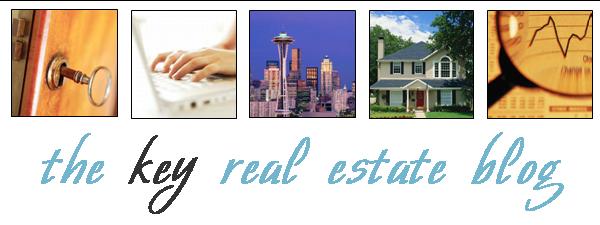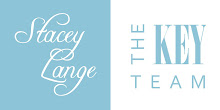By Jane Hodges
Special to The Seattle Times
First-time homebuyers have benefitted this year from falling home prices, historically low mortgage rates and $8,000 tax credits that expire Nov. 30.
But another kind of buyer — "move-up buyers" who must sell an existing home to finance the purchase of another, more expensive place — has suffered from slow-moving transactions among mid-priced homes like theirs, unable to predict when a home will sell or for how much and stalling their plans.
Hoping to spur more transactions among the move-up set, Windermere Real Estate last week began promoting 0 percent bridge loans to help them finance the purchase of a new home before they've sold their existing one.
Bridge loans are loans against the value of a home for sale, and borrowers use them to finance a new home purchase they wish to complete before they've sold their original place. Borrowers repay bridge loans with funds from their original home's sale.
Windermere says it's testing a 0 percent bridge loan to see if the offering motivates more transactions.
"We're back in the bridge-loan business," said Jill Wood, president at Windermere Real Estate in Seattle. "This is for a limited time, and our goal is to stimulate the market for the second-, third- or even fourth-time buyer."
Windermere is working with Vintage Loans to offer the program. Would-be buyers can borrow up to $100,000 at 0 percent interest for six months, or up to $200,000 for 0 percent interest for up to three months. Wood said buyers ineligible for the 0 percent bridge loan can apply for a traditional bridge loan at a 7.75 percent interest rate that the company began offering Sept. 1.
Golf Savings Bank and Washington Federal are also offering bridge loans locally. Golf Savings Bank Executive Vice President Donn Costa says rates at Golf Savings Bank are now about 8 percent and require a good credit rating.
Agents say that the middle and top tiers of the local real-estate market could certainly use a boost. In Seattle and close-in areas, the "move-up" market generally includes homes priced at $500,000 or higher, said Brent Lumley, an agent with Windermere's Oak Tree office. Such homes take three or four times longer to sell than homes below that price, he says.
"It does seem that a lot of buyers are kind of stuck," said Todd Williamson, an agent with John L. Scott Real Estate's Westwood office in West Seattle who currently represents a few listings priced at over $650,000. "Bridge loans are good in theory. But it also seems like you need equity to take advantage of them."
Williamson says that, rather than use bridge borrowing and wait on a sale, some sellers have become much more flexible about lowering prices. Indeed, he has one listing that's come down from $775,000 to $699,000 over the past six weeks.
Nationally, bridge loans play a role in less than 5 percent of all real-estate transactions, according to Keith Gumbinger, a vice president with HSH Associates, a mortgage research firm in Pompano Plains, N.J.
Craig Goebbel, a partner at Cascade Pacific Mortgage, says local bridge-loan usage is similar to national rates cited by HSH. Goebbel says he hasn't helped clients pursue bridge loans in recent months. And, when he has helped clients seek approval for such loans they've only needed to tap the financing in 15 percent of the time due to successful home sales.
A 0 percent bridge loan, however, might actually do some good, says Gumbinger.
"If this caters to the section of the market that's holding up the overall market, then it could help," he said. "Having access to more liberal financing terms always helps."
Thursday, October 8, 2009
Tuesday, October 6, 2009
Home prices gain for 3rd straight month
Case-Shiller index shows 1.6% gain in July, a sign that recovery may be in motion.
By Les Christie, CNNMoney.com staff writer
Last Updated: September 29, 2009: 10:37 AM ET
NEW YORK (CNNMoney.com) -- There was another tick-up in home prices in July, a further indication that housing markets may be stabilizing, according to a report issued Tuesday
Prices for the S&P Case-Shiller Home Price index of 20 cities rose 1.6% from a month earlier, the third consecutive month of gains. They went up 1.4% in June.
Prices were still down 13.3% compared with July 2008, but even that performance was better than expected. A panel of industry experts surveyed by Briefing.com had forecast a 14.2% loss.
"The rate of annual decline in home price values continues to decelerate and we now seem to be witnessing some sustained monthly increases across many of the markets" said David Blitzer, chairman of the Index Committee at Standard & Poor's.
Craig Thomas, a senior economist with PNC Financial Services Group, called the report very encouraging.
"The rule of thumb is that three observations is a trend," he said. "There have been three straight good reports, so, this is a trend."
The home-price gains also confirmed other positive recent housing reports such as lower inventories and more traffic being reported by home builders, according to Thomas. Trends in other economic indicators, such as job losses and retail sales have also improved lately.
A pattern is developing, according to Lawrence Yun, chief economist for the National Association of Realtors (NAR), one in which stabilizing prices could contribute to a self-sustaining recovery.
"When prices are falling, consumers ask themselves, 'Why buy now when I can buy later for less,'" he said, adding that rising prices are a strong incentive to act more quickly.
Minneapolis' gain: Among the 20 cities, Minneapolis recorded the biggest gain during July; with prices up 4.6%. San Francisco, up 3.3%, and Chicago, 2.7% higher, also recorded sizable gains.
The only price declines occurred in Las Vegas, where they fell 1.1%, and Seattle, down 0.1%.
Las Vegas has become the city hardest hit by foreclosures, which remain one of the big issues facing housing markets.
Yun points out that there will be another foreclosure spike over the next six to 12 months as the terms of option ARMs and interest-only mortgages reset, raising monthly payments for many borrowers and pushing some into delinquency. Foreclosed homes will continue to come back onto the market, padding supplies and dampening prices.
The other major uncertainty is over the first time homebuyers' tax credit that currently gives back up to $8,000 to taxpayers who buy before Dec. 1 and who have not owned a home within the past three years.
Yun credits the tax credit with being a major market stimulus. NAR estimated that an extra 350,000 homes will be sold because of it. There are bills in Congress that would extend the program and even expand it to every home buyer. If none of these are enacted, the market could suffer a reversal.
There will be a clear-cut market recovery because of buyer interest tied to that stimulus, according to Yun, and if the tax credit is allowed to lapse, we could be looking at another bottom coming our way.
The Case-Shiller index compares the sale price of a home to its price the last time it was sold, then factors in changes in prices over time.
That, ideally, yields a more accurate picture of home price fluctuations than simply calculating the median or average prices of all homes sold during the month. Those averages can be skewed by changes in the mix of homes sold during any one period
By Les Christie, CNNMoney.com staff writer
Last Updated: September 29, 2009: 10:37 AM ET
NEW YORK (CNNMoney.com) -- There was another tick-up in home prices in July, a further indication that housing markets may be stabilizing, according to a report issued Tuesday
Prices for the S&P Case-Shiller Home Price index of 20 cities rose 1.6% from a month earlier, the third consecutive month of gains. They went up 1.4% in June.
Prices were still down 13.3% compared with July 2008, but even that performance was better than expected. A panel of industry experts surveyed by Briefing.com had forecast a 14.2% loss.
"The rate of annual decline in home price values continues to decelerate and we now seem to be witnessing some sustained monthly increases across many of the markets" said David Blitzer, chairman of the Index Committee at Standard & Poor's.
Craig Thomas, a senior economist with PNC Financial Services Group, called the report very encouraging.
"The rule of thumb is that three observations is a trend," he said. "There have been three straight good reports, so, this is a trend."
The home-price gains also confirmed other positive recent housing reports such as lower inventories and more traffic being reported by home builders, according to Thomas. Trends in other economic indicators, such as job losses and retail sales have also improved lately.
A pattern is developing, according to Lawrence Yun, chief economist for the National Association of Realtors (NAR), one in which stabilizing prices could contribute to a self-sustaining recovery.
"When prices are falling, consumers ask themselves, 'Why buy now when I can buy later for less,'" he said, adding that rising prices are a strong incentive to act more quickly.
Minneapolis' gain: Among the 20 cities, Minneapolis recorded the biggest gain during July; with prices up 4.6%. San Francisco, up 3.3%, and Chicago, 2.7% higher, also recorded sizable gains.
The only price declines occurred in Las Vegas, where they fell 1.1%, and Seattle, down 0.1%.
Las Vegas has become the city hardest hit by foreclosures, which remain one of the big issues facing housing markets.
Yun points out that there will be another foreclosure spike over the next six to 12 months as the terms of option ARMs and interest-only mortgages reset, raising monthly payments for many borrowers and pushing some into delinquency. Foreclosed homes will continue to come back onto the market, padding supplies and dampening prices.
The other major uncertainty is over the first time homebuyers' tax credit that currently gives back up to $8,000 to taxpayers who buy before Dec. 1 and who have not owned a home within the past three years.
Yun credits the tax credit with being a major market stimulus. NAR estimated that an extra 350,000 homes will be sold because of it. There are bills in Congress that would extend the program and even expand it to every home buyer. If none of these are enacted, the market could suffer a reversal.
There will be a clear-cut market recovery because of buyer interest tied to that stimulus, according to Yun, and if the tax credit is allowed to lapse, we could be looking at another bottom coming our way.
The Case-Shiller index compares the sale price of a home to its price the last time it was sold, then factors in changes in prices over time.
That, ideally, yields a more accurate picture of home price fluctuations than simply calculating the median or average prices of all homes sold during the month. Those averages can be skewed by changes in the mix of homes sold during any one period
Subscribe to:
Posts (Atom)






